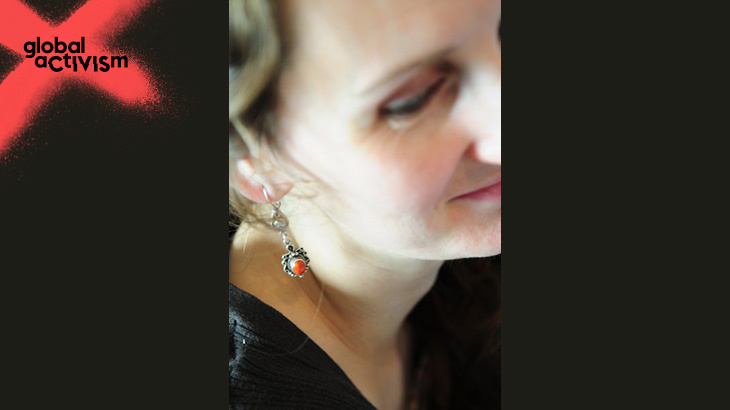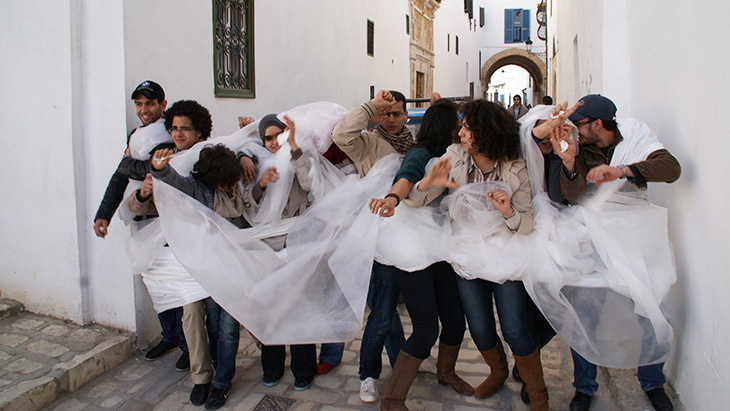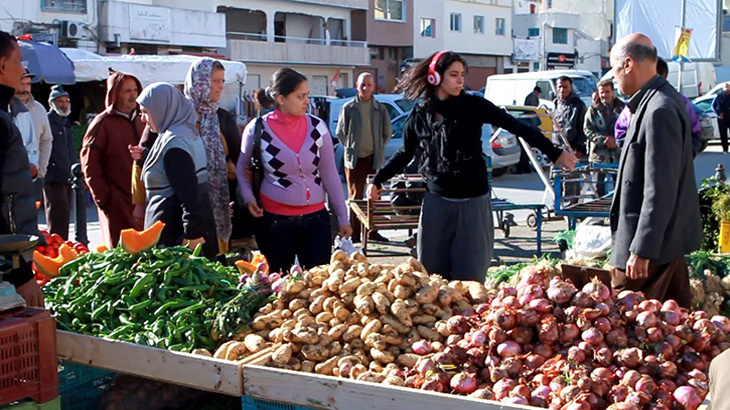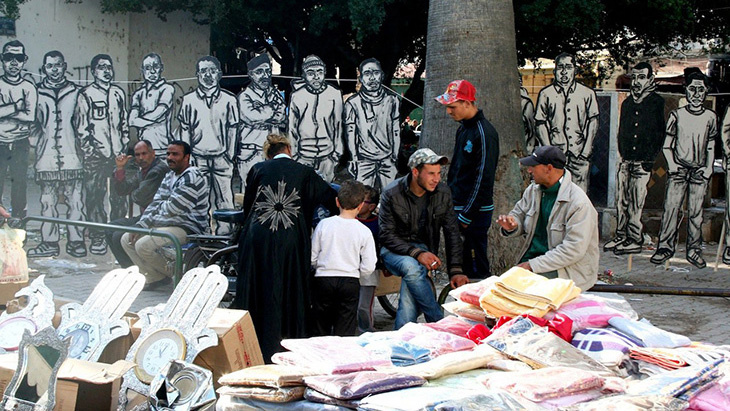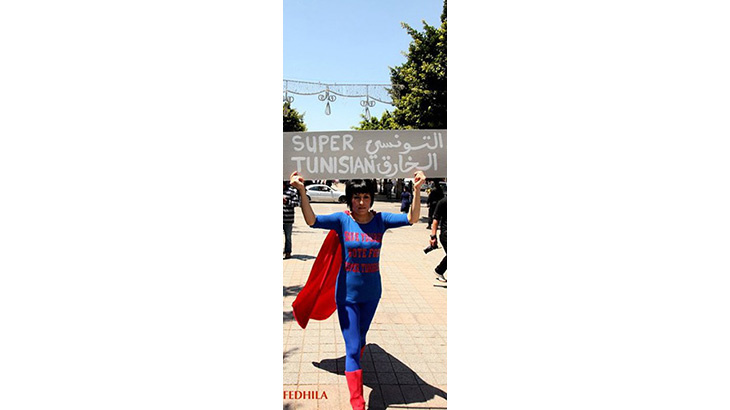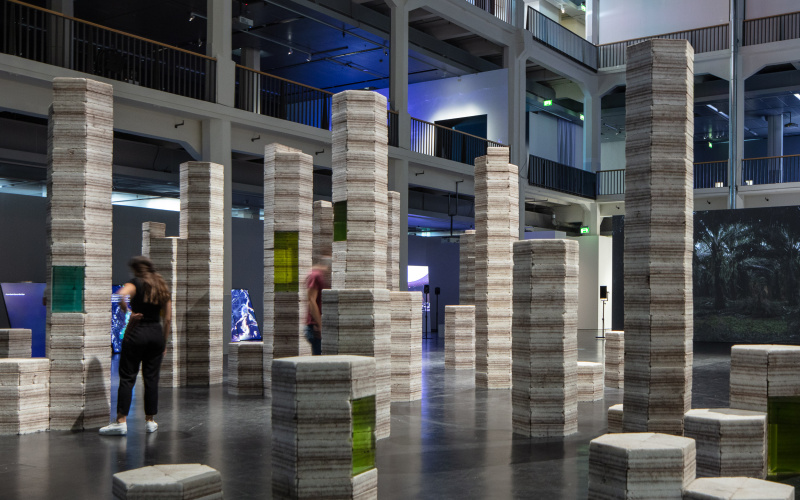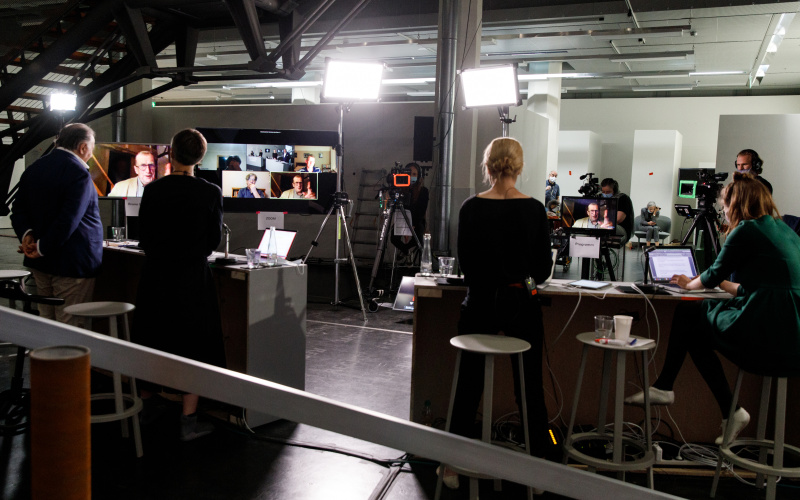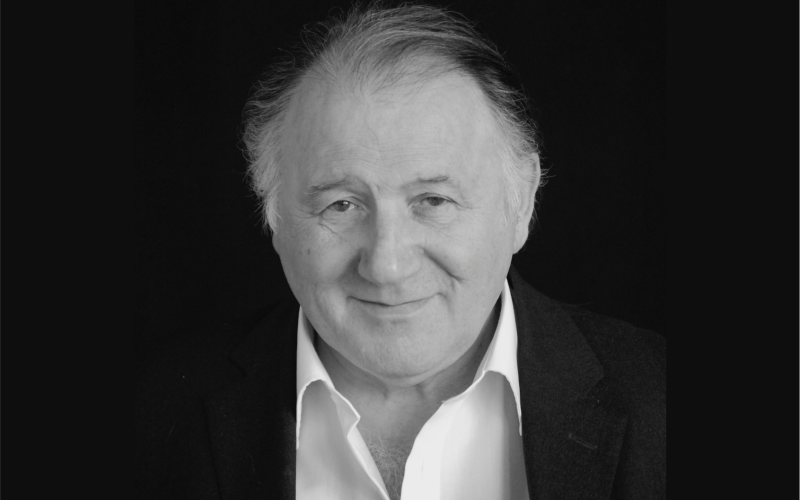Art – Vector of a Reappropriation of Public Space in Tunisia?
Today, with Tunisia rebuilding itself in the wake of the 14 January 2011 Revolution, discussing art in the public space also means addressing an emerging field that is still evolving, as is the country’s very image of itself. In Tunisia, following the significant historical events, the domain of artistic endeavor has changed once and for all. Public space, which is closely associated with citizens, has become a medium for artists to an unprecedented degree, offering them a stage to try out new forms of expression. From the end of the 1970s until the Revolution, public space in Tunisia was controlled by the police. It was inconceivable to make any rebellious statements there, such as a subversive artistic presence would have constituted. This at least in part explains why despite the fertile soil public space afforded traditional street arts (traveling theaters, fairytale tellers, etc.), no specific contemporary art use of it arose. With a few exceptions, such as Festival Dream City [1], Tunisian artists mainly exercised their calling in the venues expressly foreseen for this, namely, galleries and theaters.
Now, the revolution in this field is brushing away the previously rigid dividing lines. The street welcomes the liberated words of both the citizens and the artists who express themselves as such there. Since the early months of 2011, there has been many an in-situ performance to witness.[2] These new approaches are a surprise, kindle curiosity and enthusiasm, and yet sometimes are rejected outright by passers-by. The initial phase of reappropriating public space by citizen artists is now giving way to a more precarious phase in which new forms of censorship are cropping up, initiated by citizens who have little time for the newly gained freedom of expression. Artists get threatened, some of them physically attacked. There is a fierce controversy over the role of the artist, and Tunisian society is busy discovering art’s subversive function. In the artistic world an increasing number of voices are to be heard who say that in a country in which there is practically no art education, the public needs to be taken by the hand and accompanied through the new terrain. The focus is not, these artists say, on making select art for an audience of a few initiates, but to familiarize an audience of non-initiates in a way they can comprehend. As a result, since 2012 new artistic actors have joined the scene. They are not the product of the official art world and tend to resolutely reject the latter, and they intervene without authorization in public space, the underlying principle of which they dismiss.
These artists feel the need to take passers-by by surprise in order to offer them an experience.[3] Here, the artist is one citizen among others, reactivating the social ties to his or her fellow citizens and thus visualizing the role they should play in society. In this phase, actions in public space are also encountered outside the capital. The ground is being prepared. These steps are carried out at civic associations that rely on a participatory artistic approach.[4] After all, art in public space has an important role to play in rebuilding Tunisian society. However, artists must first find their place in society and actively participate in the collective understanding of the changes. A new identity arises, new realities are discernible. It is now up to the artists to make use of these to open up new opportunities and turn public space into a shared space of debate and enquiry.
Text: Aurélie Machghoul
All articles of the blog discussion on “global aCtIVISm” Further information on: www.global-activism.de About the author Aurélie Machghoul is a freelance journalist and editor in chief of the magazine Z.A.T. – Zone Artistique Temporaire. She studied art history and anthropology in Lyon where she worked for the publishers Éditions du Moutard, Institut Lyonnais, the Ministry of Culture and Communication, and the Théâtre des Asphodèles. In Tunisia, from 2009 to 2010 she was chief editor of the magazine ID déco and then of the journal Mille & 1 Tunisie, for which she also ran the website.
____________________________________
Note Translated from the German by Jeremy Gaines Teaser Photo: Portrait of Aurélie Machghoul © Ambre Ludwiczak
[1] Dream City is a collection of contemporary artistic routes trodden through public spaces which was founded in Tunis in 2007 by dancers and choreographers Selma and Soane Ouissi.
[2] I refer here in particular to Art for Tunisia by Selim Tlili, Art dans la rue-Art dans le quartier by Faten Rouissi, Horr 1 by Sonia Kallel & Sana Tamzini, St’art by Moufida Fedhila, and Zoo Project, Sabrina in the Street by Patricia K. Triki, et al.
[3] I am specifically thinking of the events und performances Klem Chera3 (Parole de rue), organized by Amine Gharbi, Je danserai malgré tout by Art Solution, and the performances of Ahl el Kahf and others.
[4] See the action Laaroussa by l’Art Rue in Sejnane, Land’Art by the Hippocampe association in Tozeur, De colline en colline in Sidi Bou Saïd, Takrouna, and Chenini.
